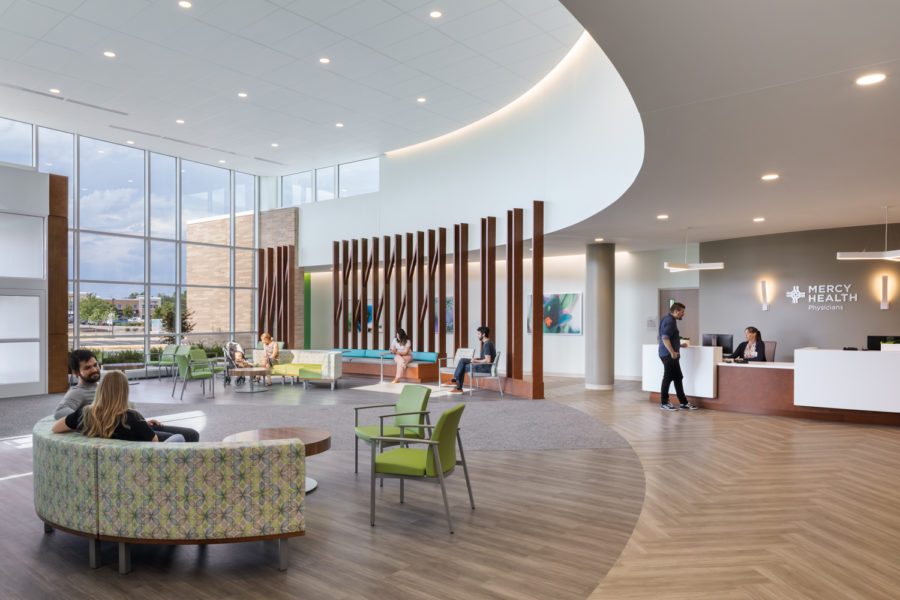Insights
Mar 23, 2021 _ insights
Registration & Waiting: Weak Points and an Enduring Strength
In ambulatory facility design, human interaction and empathy are more important than ever. For years, designers and healthcare institutions have been working together to improve the patient experience, including significant focus on the registration and waiting process. However, delivering care in the COVID era has highlighted why changes are imperative. More than patient perception is at stake. Changing how patients register and wait for appointments will enhance the healthcare industry’s ability to respond to crises.
There is an opportunity to transform the waiting experience so waiting time is not wasted time.
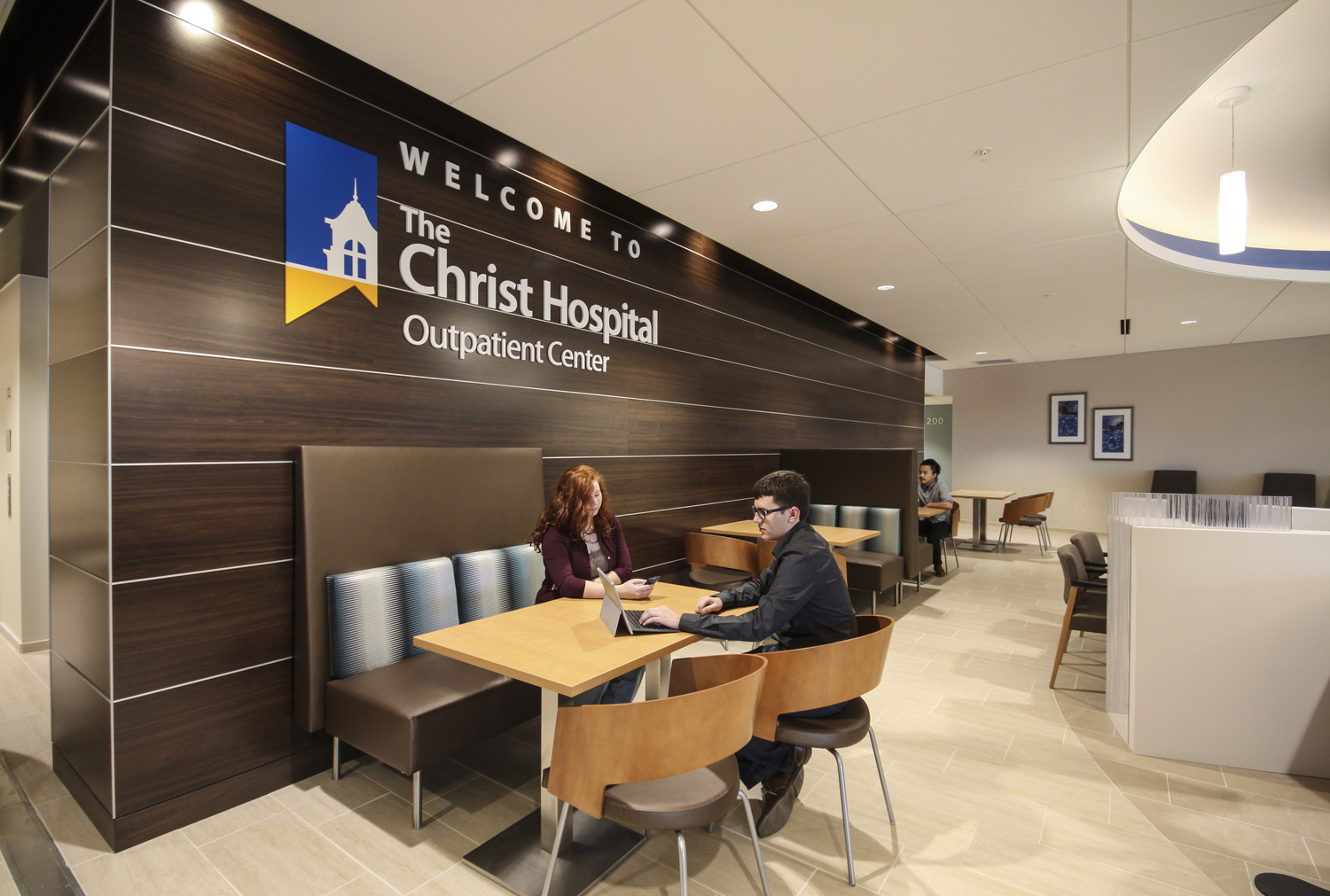 Leveraging technology is key. Healthcare systems across the country are already using technology in safe and effective ways. Over the past year many people have grown accustomed to checking in on their own phone from the parking lot. Why go back to the old way— walking into a registration area, sharing screens, pens, and papers with every other patient to fill out pre-visit paperwork? Does anyone want to go back to sitting elbow to elbow with a stranger while waiting for an appointment, or while a loved one is in surgery? We can use the lesson of the COVID pandemic to evolve the process; to help patients and providers make the most of their face-to-face time by focusing on simplicity, choice, and personal interaction that builds confidence and comfort.
Leveraging technology is key. Healthcare systems across the country are already using technology in safe and effective ways. Over the past year many people have grown accustomed to checking in on their own phone from the parking lot. Why go back to the old way— walking into a registration area, sharing screens, pens, and papers with every other patient to fill out pre-visit paperwork? Does anyone want to go back to sitting elbow to elbow with a stranger while waiting for an appointment, or while a loved one is in surgery? We can use the lesson of the COVID pandemic to evolve the process; to help patients and providers make the most of their face-to-face time by focusing on simplicity, choice, and personal interaction that builds confidence and comfort.
The push to improve the waiting experience is not new; focusing on how the patient feels and perceives an organization based on the “look and feel” of the waiting room has been a priority for an increasing number of organizations. But the obvious health risks of the tight proximity that many waiting rooms often pose to patients and families brings a new urgency to the waiting experience. Removing chairs— or worse yet—taping off chairs in a waiting room to accommodate social distancing highlights just one of the struggles that needs to be overcome in the waiting experience. GBBN has been working closely with our clients to deploy research-based solutions to enhance waiting spaces. These solutions improve the patient and family experience as well as the efficiency of the space. GBBN’s own research on proxemics and our in-person observations have shown that a variety of seating types and small clusters within a waiting space accommodate the needs and number of people by providing seating choices and clear lines of sight.
Simulation software can help drive efficient design and patient comfort.
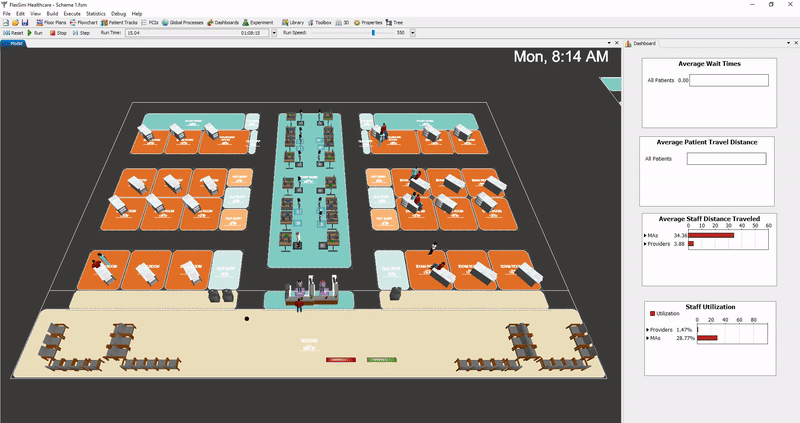
As designers and planners, we rely not only on qualitative data like observations and surveys; we also employ quantitative data for a well-rounded approach to design. COVID has increased the use of telehealth with increased televisits among patients and providers. Last year, the Kaiser Family Foundation reported the results of a national poll that showed a 23% increase in the number of adults who used telehealth services, a significant increase over prior years. The rise of telehealth will also have an impact on the in-person waiting volume and experience at ambulatory facilities. “With the help of simulation software, we can input data points like frequency of patient arrivals, length of appointment, quantity of exam rooms, and number of providers and staff to help inform our planning,” says GBBN’s Amy Mees, a medical planner and healthcare designer who works closely with organizations like Cincinnati Children’s, TriHealth, and Bon Secours Mercy Health. “We can run scenarios that drill down to what we’re trying to accomplish with our planning,” she explains. “For instance, we may want to understand the number of patients and families that will occupy the waiting area throughout the day. Our studies can help an organization’s management team modify their operations to smooth out the peaks and valleys that occur day to day.”
“…Our studies can help an organization’s management team modify their operations to smooth out the peaks and valleys that occur day to day.”
The most comforting element in waiting spaces is still human interaction and connection.
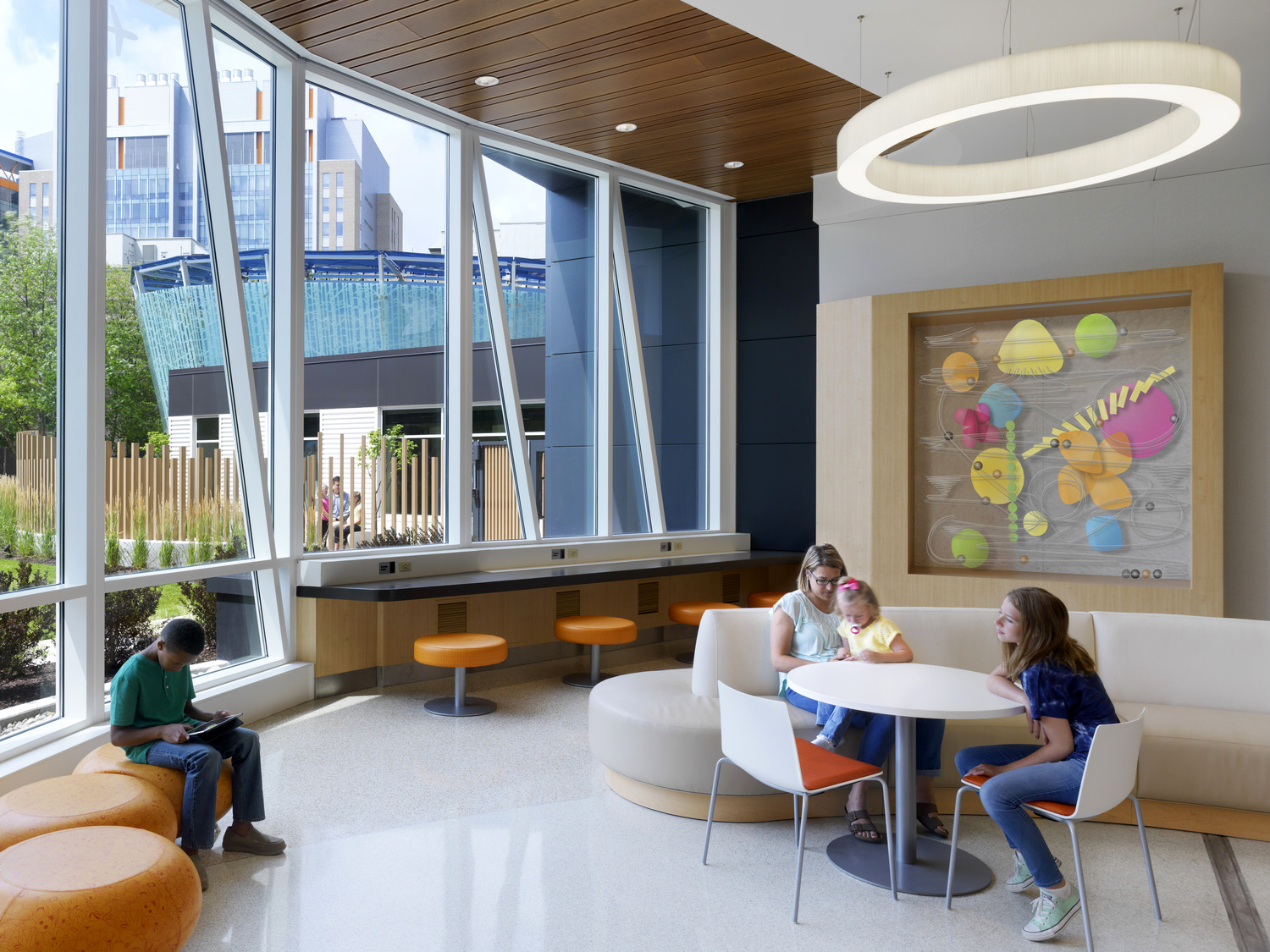 One critical element that should not be overshadowed by use of technology and the need for safety: the importance of human interaction and personal connections in reception and waiting spaces. When humans feel stress, anxiety, or uncertainty, our sympathetic nervous system sends us into a defensive state of fight, flight, or freeze. The people around us in these moments can have a real impact on what happens next. Neuroscientist Stephen Porges described this physiological process in a recent issue of Psychology Today: “Without thinking about it, we pick up nonverbal cues that tell us whether the person we’re interacting with is a friend or a foe. Our heart rate, perspiration, and respiration send those signals in a process called neuroception.”
One critical element that should not be overshadowed by use of technology and the need for safety: the importance of human interaction and personal connections in reception and waiting spaces. When humans feel stress, anxiety, or uncertainty, our sympathetic nervous system sends us into a defensive state of fight, flight, or freeze. The people around us in these moments can have a real impact on what happens next. Neuroscientist Stephen Porges described this physiological process in a recent issue of Psychology Today: “Without thinking about it, we pick up nonverbal cues that tell us whether the person we’re interacting with is a friend or a foe. Our heart rate, perspiration, and respiration send those signals in a process called neuroception.”
Connecting with each other in person allows us to make eye contact, read body language, and pick up on other non-verbal cues. This helps put us at ease. In-person/face-to-face interactions help us understand one another; they help us truly see one another and be seen; and they help foster empathy. While technology may streamline the registration process, it won’t eliminate the need for people. Findings from a three-year study of general practice medicine in the United Kingdom suggest that as a first point-of-contact, clinic receptionists perform complex forms of emotion management to facilitate effective care. Person-to-person communication supports both the patient and an organization’s commitment to caring for the whole person.
“Digital healthcare services are here to stay,”
In healthcare there is always another risk that can threaten to upend a system’s established processes or sideline a particular facility. Leveraging technology is as important in how your patients access care as it is for building operations and asset management. But technology must be combined with the compassion and empathy of human interaction. Using design to harness the power of both helps patients and families feel comfortable.
_____________________________
 Erin Schmidt, NCDIQ, LEED AP, is an Associate at GBBN where she works closely with leading healthcare providers to create design solutions that de-institutionalize medical environments.
Erin Schmidt, NCDIQ, LEED AP, is an Associate at GBBN where she works closely with leading healthcare providers to create design solutions that de-institutionalize medical environments.
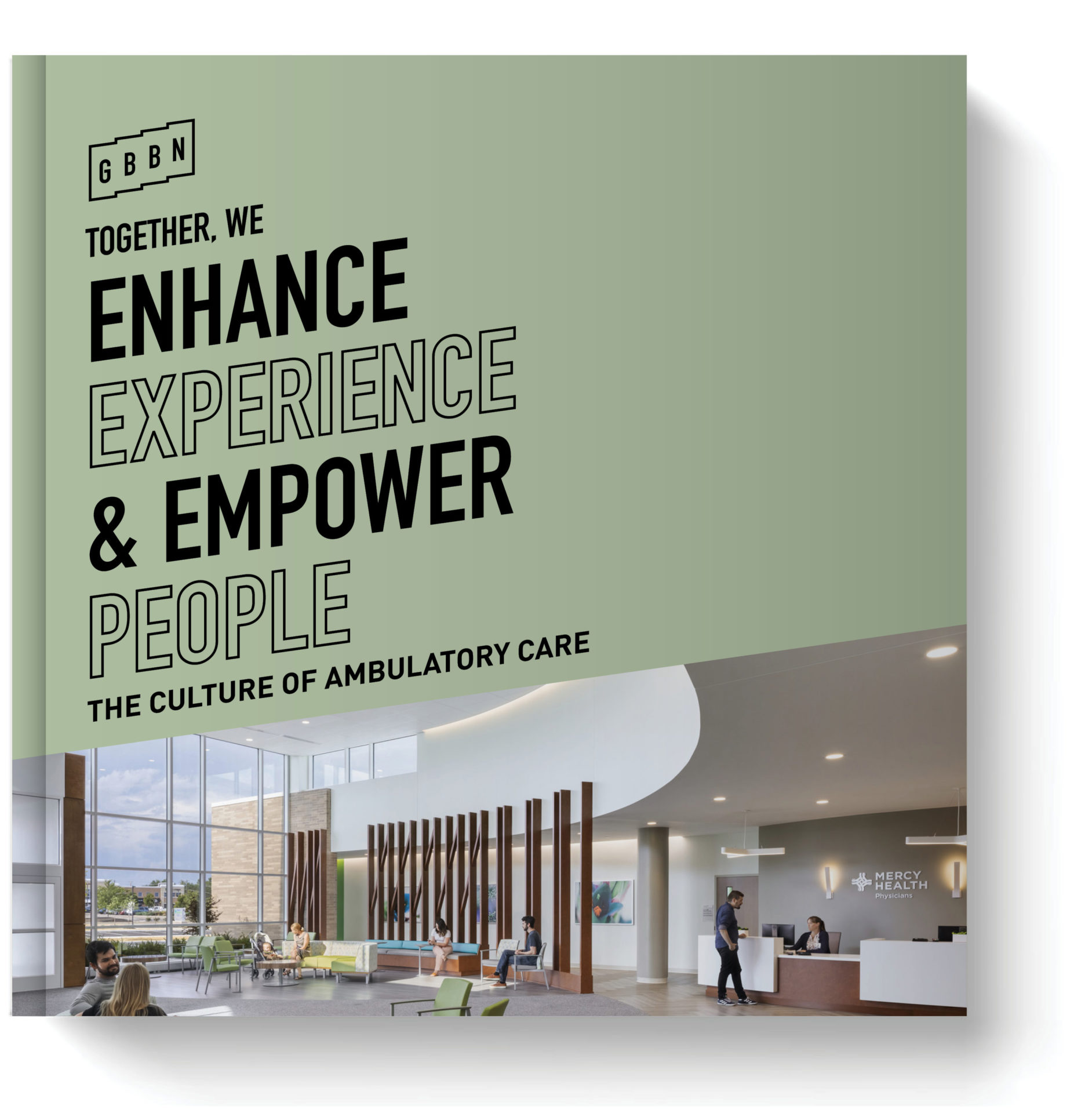 Want to know more about our ambulatory care experience?
Want to know more about our ambulatory care experience?
Read our brochure, The Culture of Ambulatory Care
Want to read more of GBBN’s insights on the changing shape of ambulatory care? Check out Mickey LeRoy’s article, Beyond the Pandemic: A Long-term View of Healthcare Environments’ ‘New Normal.’
Sean Cottengim recently shared his insights on the impact of telehealth’s on healthcare facilities in a white paper for the AIA’s Academy of Architecture for Health Journal. You can read that paper here.
